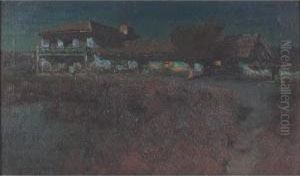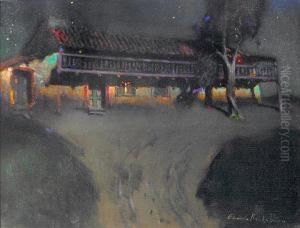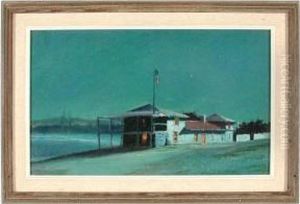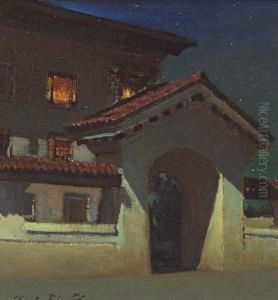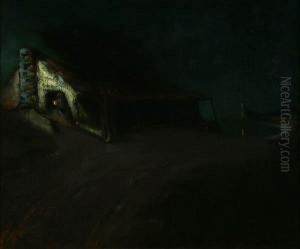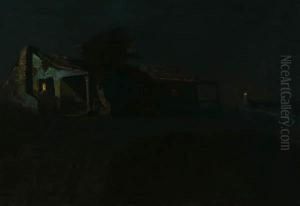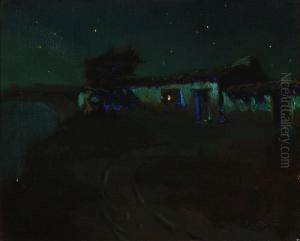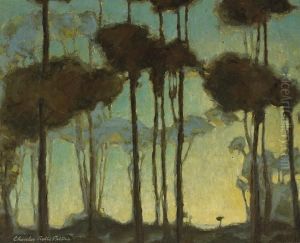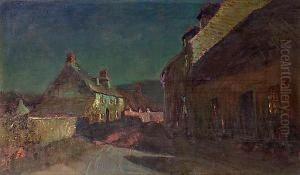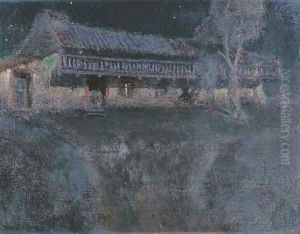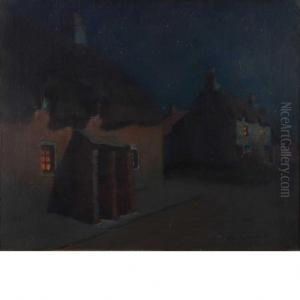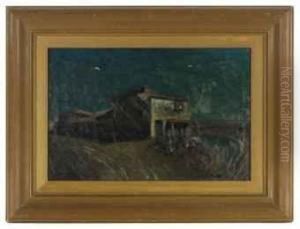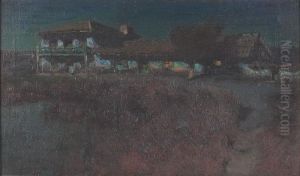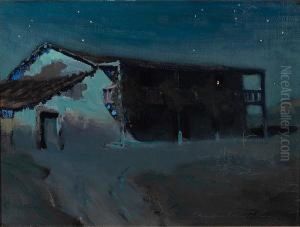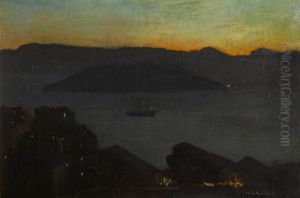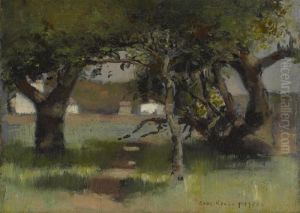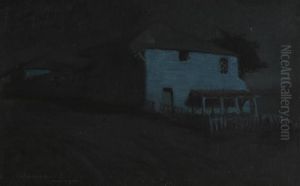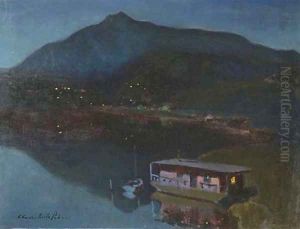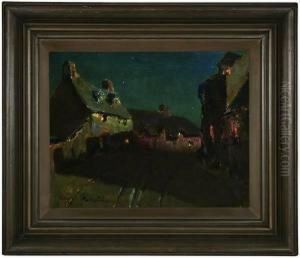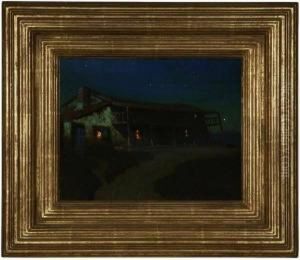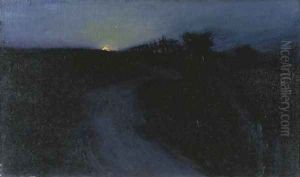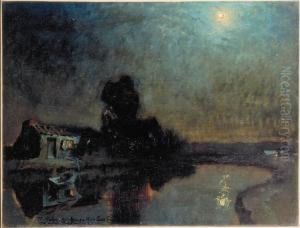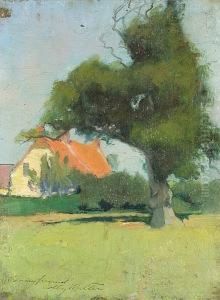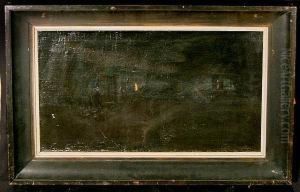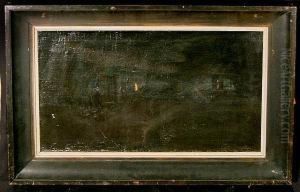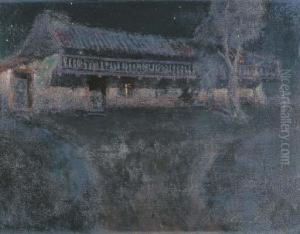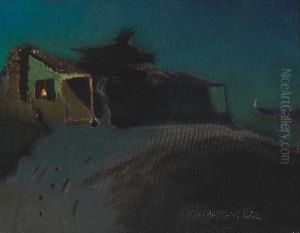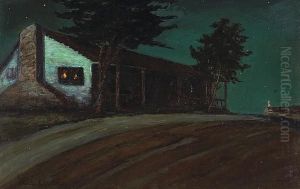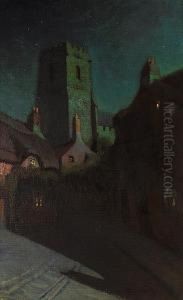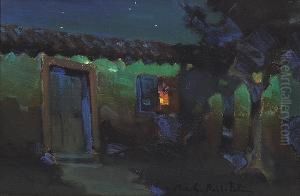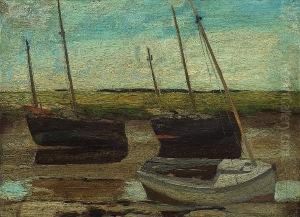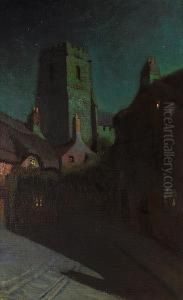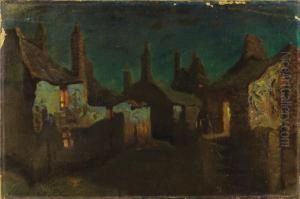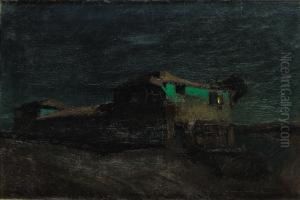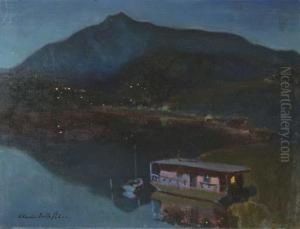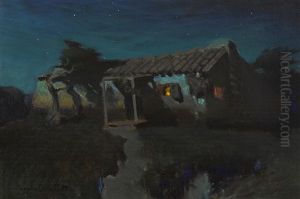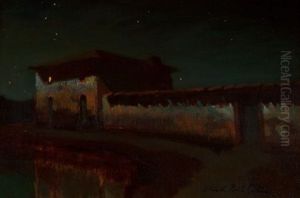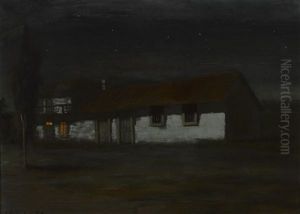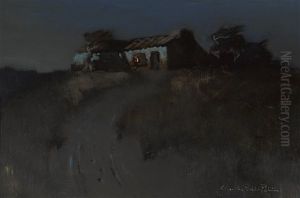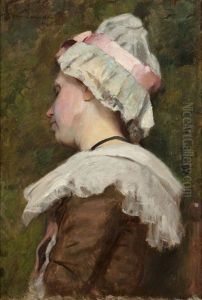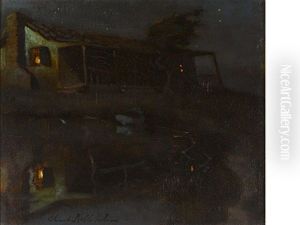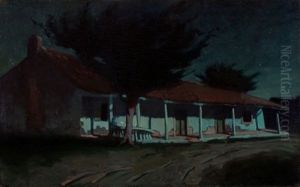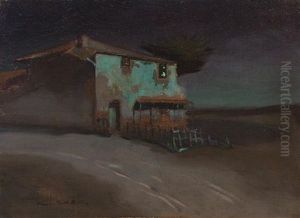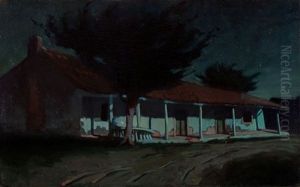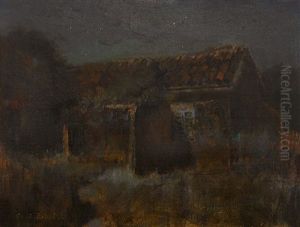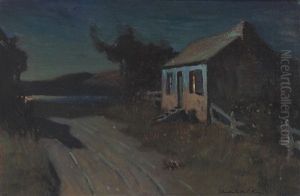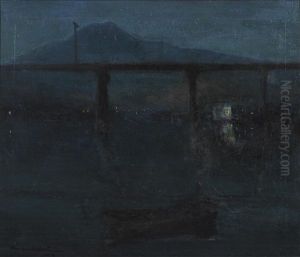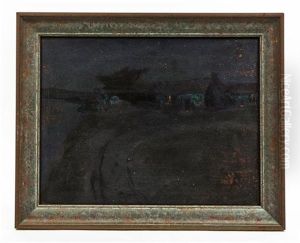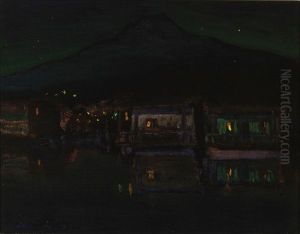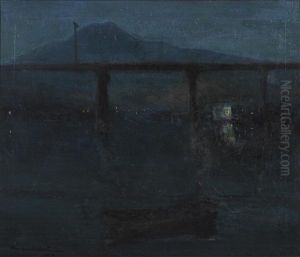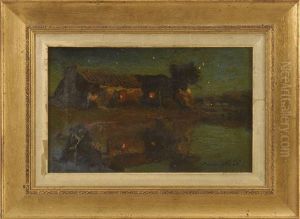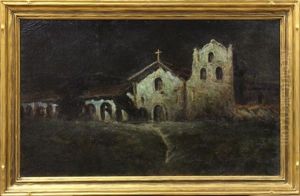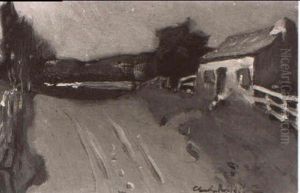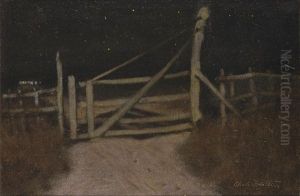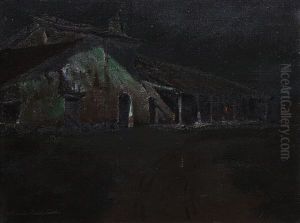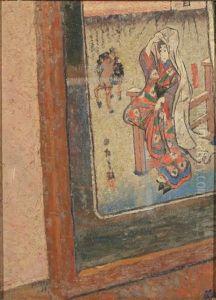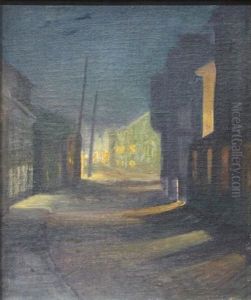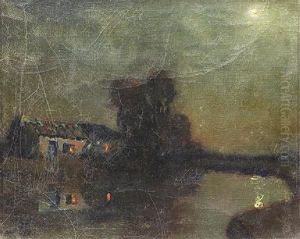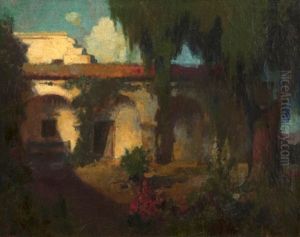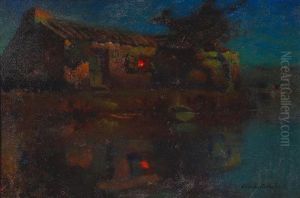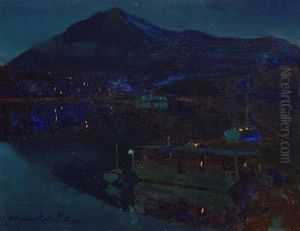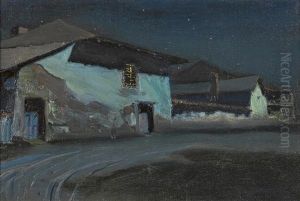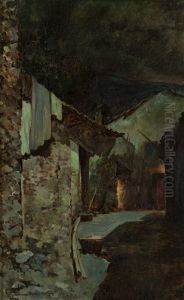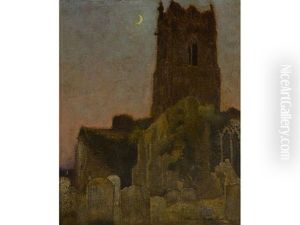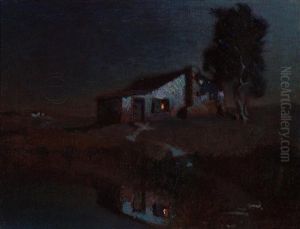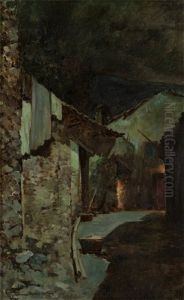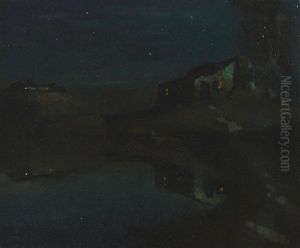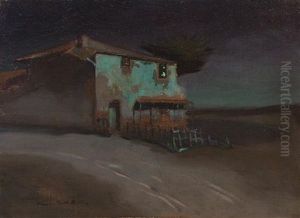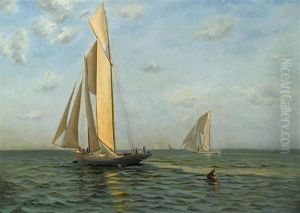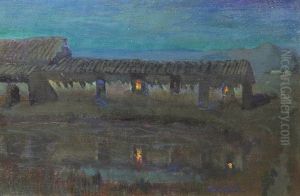Charles Rollo Peters Paintings
Charles Rollo Peters was an American painter known for his nocturnes, or night scenes, particularly of the California landscape and the Monterey region. Born on March 3, 1862, in San Francisco, California, Peters was part of a wealthy family and was able to travel extensively throughout his life. His early education included the study of art in San Francisco and later in Europe, where he was influenced by the Dutch masters and the Tonalist movement, which emphasized mood and shadow.
In Paris, Peters studied with experienced artists such as Jules Lefebvre and Gustave Boulanger, and he absorbed the European romantic and impressionist styles. However, it was his fascination with night scenes, inspired by the 17th-century Dutch painter Rembrandt and the French artist Charles-François Daubigny, that truly defined his artistic career. After returning to California, he became known as the 'Poet of the Night,' and his work was characterized by moody, atmospheric landscapes featuring moonlit scenes of old California missions, adobes, and the unique Californian environment.
Peters's nocturnes were distinctive for their use of light and shadow, creating a sense of stillness and mystery. He often depicted the landscape under the tranquil light of the moon, utilizing a limited color palette dominated by dark hues and subtle gradations of light. This technique allowed him to capture the quietude and isolation of night in a way that resonated with viewers and distinguished him from other artists of his time.
During his career, Charles Rollo Peters was a prominent figure in the San Francisco and Monterey art communities, and his paintings were widely exhibited and collected. Despite his success, he faced personal challenges, including the loss of his home during the 1906 San Francisco earthquake. Nevertheless, he continued to produce compelling nocturnes until his death on July 7, 1928, in Monterey, California.
His legacy endures in the form of his evocative nightscapes, which are held in high regard and continue to be sought after by collectors. Peters's work can be found in various museum collections, including the Crocker Art Museum in Sacramento and the Monterey Museum of Art, where his contributions to California's artistic heritage are celebrated.
